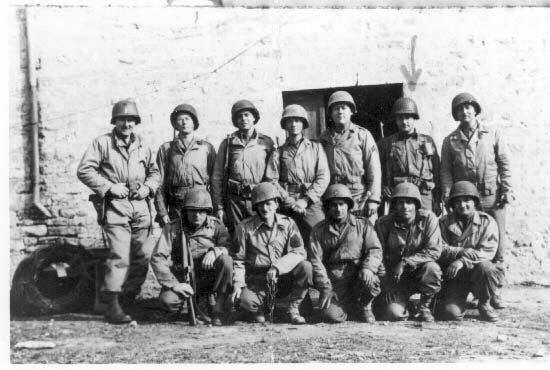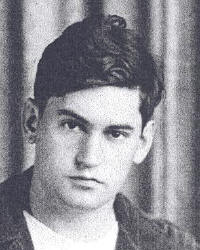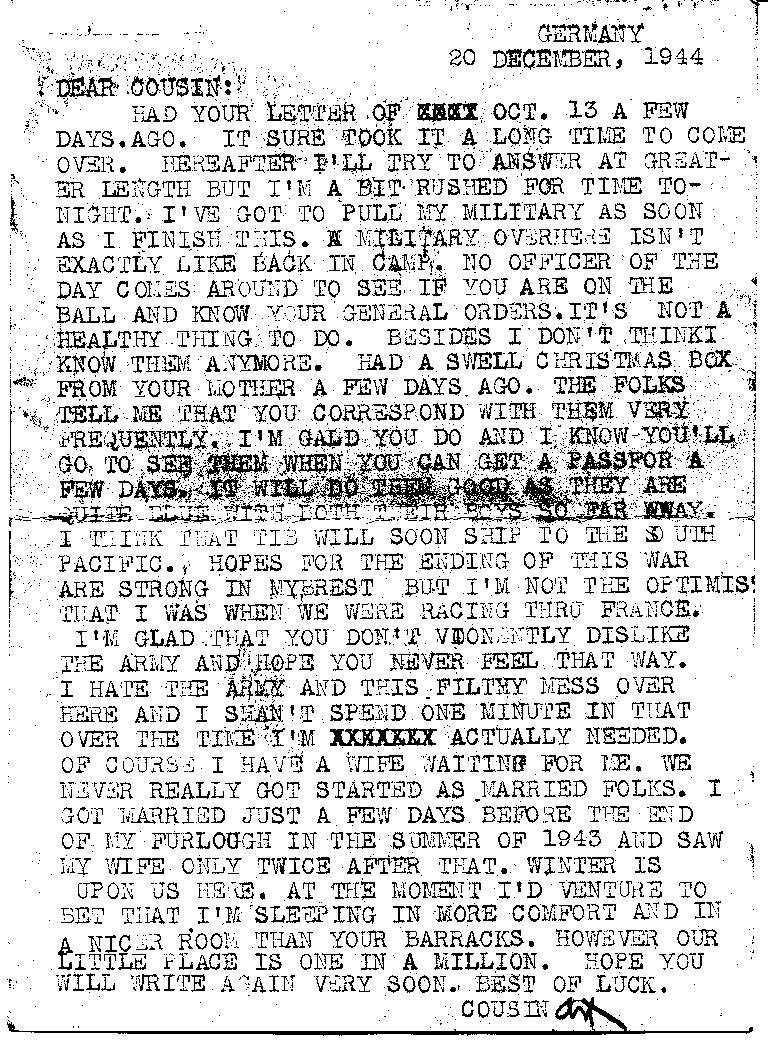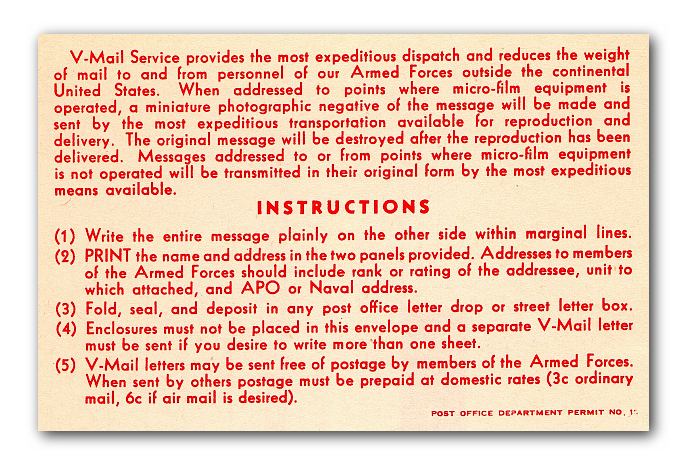The V-Mail letter below was contributed to us by Joseph Wilkson. This letter, written from Germany and dated December 20, 1944, is from his cousin Arthur "Art" Freeman, Jr., to another cousin, Tom Madore. Art Freeman was a Cpl. in the Army who participated in the D-Day Invasion during WW-II. Art Freeman's parents were Arthur and Esther (Marchand) Freeman. Arthur, Jr., who was married to Eula (Griffard) Freeman, died November 25, 1981, and is buried at New Calvary Cemetery in Farmington, Missouri. Arthur Freeman, Jr. and Eula (Griffard) Freeman were the parents of David F. Freeman who was killed in the Vietnam War on Sept. 15, 1970. He is buried at New Calvary Cemetery with his parents. |
|
|
 The arrow in the above photo is pointing down toward Cpl. Arthur "Art" Freeman, Jr. Written on the back is "June 1944, Cpl. Art Freeman Jr. near Ste. Mare (sic) Eglise" which is located in Normandy. Ste-Mere-Eglise was first town in France to be liberated. This was done on June 6, 1944. For further information on Ste. Mere Eglise [a/k/a St. Mere Eglise], click HERE. |
|
|
| According to the National Postal
Museum, V, or Victory mail, was a valuable tool for the military during World War II.
The process, which originated in England, was the microfilming of specially designed
letter sheets. Instead of using valuable cargo space to ship whole letters overseas,
microfilmed copies were sent in their stead and then "blown up" at an overseas
destination before being delivered to military personnel. V-mail ensured that thousands of tons of shipping space could be reserved for war materials. The 37 mail bags required to carry 150,000 one-page letters could be replaced by a single mail sack. The weight of that same amount of mail was reduced dramatically from 2,575 pounds to a mere 45. The blue-striped cardboard containers held V-mail letter forms. The system of microfilming letters was based on the use of special V-mail letter-sheets, which were a combination of letter and envelope. The letter-sheets were constructed and gummed so as to fold into a uniform and distinctively marked envelope. The user wrote the message in the limited space provided, added the name and address of the recipient, folded the form, affixed postage, if necessary, and mailed the letter. V-mail correspondence was then reduced to thumb-nail size on microfilm. The rolls of film were sent to prescribed destinations for developing at a receiving station near the addressee. Finally, individual facsimiles of the letter-sheets were reproduced about one-quarter the original size and the miniature mail was then delivered to the addressee. The first large Army operated V-mail station overseas was opened on April 15, 1943 at Casablanca, North Africa. Hastily set up in a field following the Allied invasion of North Africa, this makeshift station continued to operate until September 15, 1943. Between June 15, 1942 and April 1, 1945, 556,513,795 pieces of V-mail were sent from the U.S. to military post offices and over 510 million pieces were received from military personnel abroad. In spite of the patriotic draw of V-mail, most people still sent regular first class mail. In 1944, for instance, Navy personnel received 38 million pieces of V-mail, but over 272 million pieces of regular first class mail. |
|
|
|


